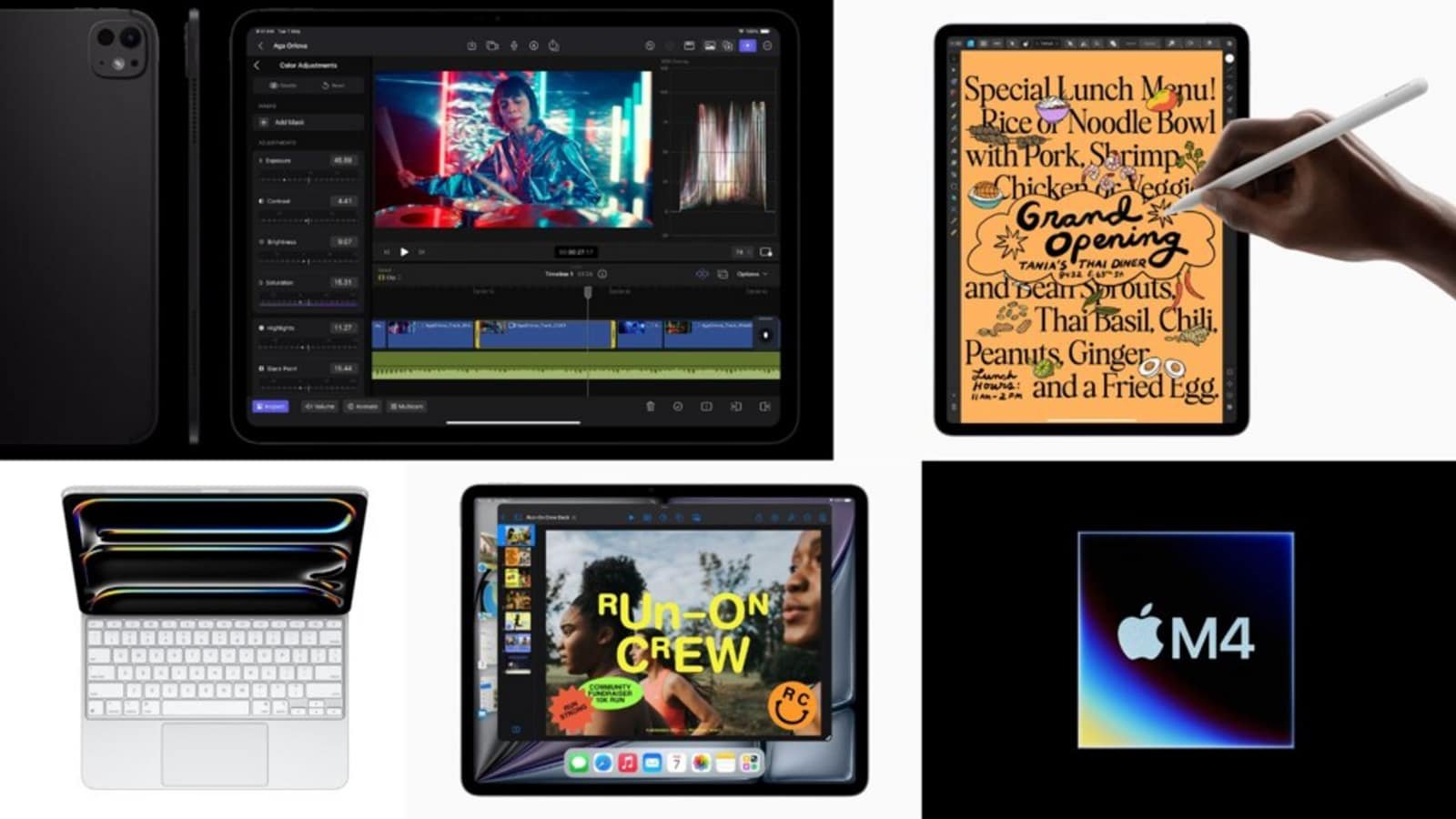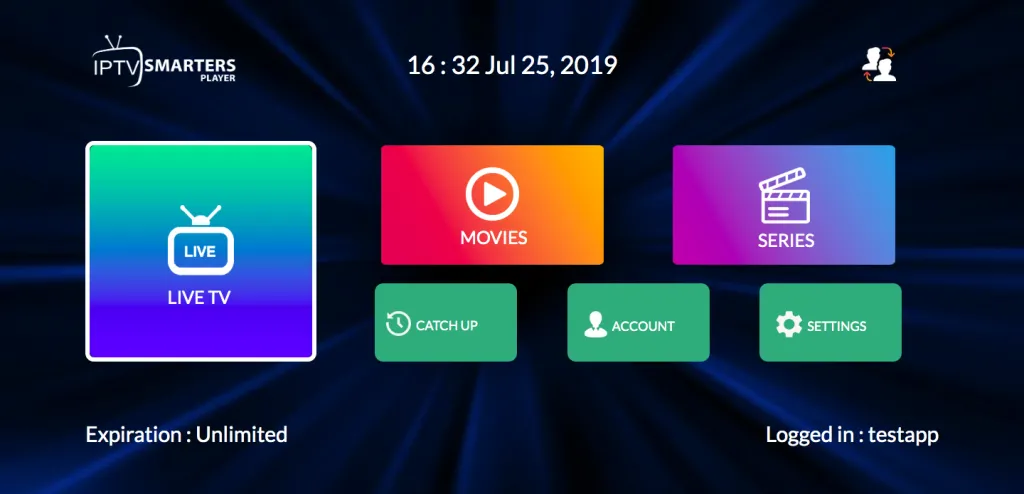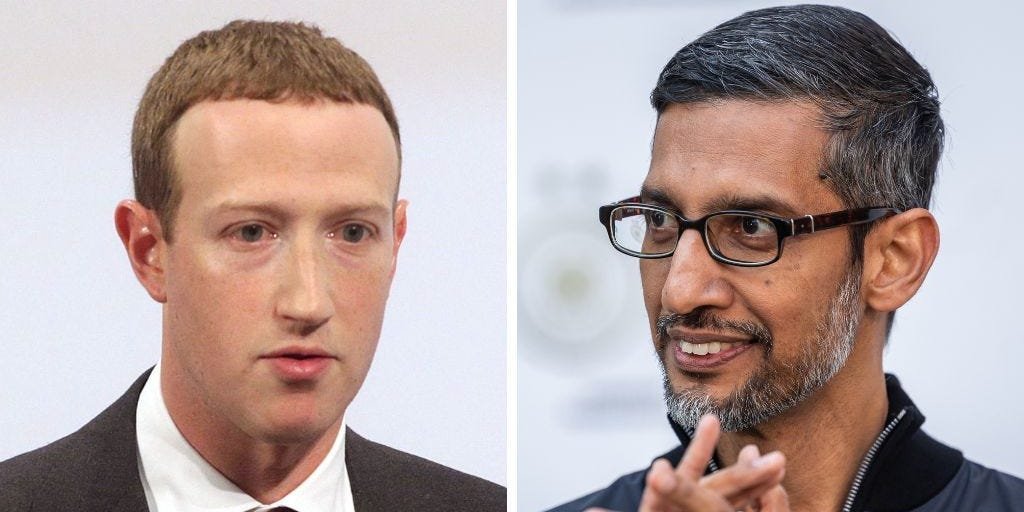
Two long years ago. That’s when Apple last refreshed the iPad Pro and iPad Air portfolios. If anyone thought this year’s planned updates were going to be anything less than significant, they’d simply be kidding themselves. “Biggest day for the iPad, since its introduction”, an apt summary by Tim Cook, CEO of Apple. Quite on point. Joining two OLED panels together, slimmest ever Apple product, faster performance than “AI PCs”, even an Apple Pencil Pro. Significant would likely be an understatement, to just how far forward the iPad Pro and iPad Pro leap, in one go. And just in case you missed it, the Apple Vision Pro is being positioned as an enterprise product. Rightly so too, if you ask me.
Back to the iPads, and the iPad Pro for a moment. This is the first time an iPad and not a Mac, is introducing a new Apple Silicon chip. The M4 makes the iPad Pro a torchbearer for performance, at least till the Macs come around later. This has up to four performance cores and six efficiency cores, and as an evolution of the M3 that we’ve experienced in detail on the Macs, a 10-core GPU alongside Dynamic Caching, and hardware-accelerated mesh shading and ray tracing, are being made available on the iPad, for the first time. The display is now an OLED (the internet has willed this into reality; we cannot discount that). Apple say the size of an iPad Pro’s display (particularly the larger 13-inch) was too big for an OLED panel to light itself the way it is expected to, while keeping in mind power and heat dissipation. Hence, tandem – the use of two OLED panels to make up one screen. This must be a gorgeous screen, and I really cannot wait to try this canvas.
- The M4 is an expected (and significant) step forward with performance and machine learning. A 10-core CPU and a new 10-core GPU, include the most powerful Neural Engine ever in an Apple device, with 38 trillion operations per second – for perspective, that’s 60x faster than the first Neural Engine in the A11 Bionic chip. Wait for WWDC next month, for iOS, iPadOS and macOS’ AI evolution.
- The iPad Air refresh widens screen size choice, and therefore a potential for different use-cases. The 11-inch option is now joined by a 13-inch iPad Air. This is powered by the M2 chip (that’s very powerful too).
- The Apple Pencil Pro joins the Apple Pencil (2nd generation) and the Apple Pencil (USB-C) as the third choice for potential buyers. This is the most feature loaded, with a new way to invoke on-screen tools and with haptic feedback.
- There’s an updated Magic Keyboard for the iPad Pro too, with redesigned keys, tweaked layout and an aluminium touchpad that’s also slightly bigger in size.
CHAPTERS
TV may be evolving, and a simplification is being re-attempted. This relates to a space I followed quite intently back in 2008-09, as India’s TV watching audience had grown tired of the shoddy quality and service of local cable operators and began to experiment with alternatives. Direct to home (DTH) services including Tata Sky (later, Tata Play), Dishtv and Sun Direct got things well and truly rolling at the time. In parallel, there were pockets which saw quite a bit of interest for something called IPTV. Or Internet Protocol Television. Basically, Live TV delivered over the broadband lines.
One wire to deliver two services, and therefore, the convenience of one bill as well. At that time, it was important, because we didn’t have bundling that’s commonplace now, such as Airtel Black or Jio Plus family plans. Varun Pasricha, who is COO for Excitel, a leading ISP in India, remembers that time quite vividly (I still believe we are among the very few who do), having tried Airtel’s IPTV product then. We exchanged notes on the positives, and what didn’t work – sluggishness in operation, for example. Important that Varun remembers that experience, because Excitel is betting big on their IPTV service which is now available in Delhi and Hyderabad and will see a pan-India rollout in a couple of months’ time.
He talks of value, and that’s very clear with Excitel’s pricing as well, which can be as low as ₹734 per month for the complete combo of 200Mbps broadband, Live TV with more than 550 channels (and increasing) as well as a bundle of OTT subscriptions. If this works, I do wonder if Reliance JioFiber or Airtel Xstream will attempt something similar on their broadband networks. I’m sure technology isn’t the challenge, neither is the ability to price it well. But till what point does it make business sense for them?
There are three reasons for IPTV’s chances at succeeding this time around, beyond the bundled pricing advantage which ISPs now have a better grip over with the passage of time. First is the better-quality hardware such as set-top boxes that’ll connect to the TV at a much lower price than before. Hence, the hope for IPTV to pip DTH and cable to true 4K channels. Second, the fiber upgrade for broadband networks across the country, eliminating the copper cables that had multiple fault points and losses between the ISP and a user’s home. Third, and important, is regulation, which now gives IPTV players parity with any other broadcast delivery medium for access to channels.
We all love billing bundles for convenience, for postpaid mobile connections and/or broadband too. Would you be happy to have a single fiber cable running to your home to deliver broadband and TV as well? It may be convenient, and if ISPs can ensure service reliability, a genuine value proposition. We’ll keep an eye on this one. I suggest, so should you.
WATCH
This week, my Tech Tonic column pondered over a question troubling (knowingly, or otherwise) us all. Is linear TV ever going to become smart enough to adopt some of the streaming smartness? Or at streaming (or OTT, as we call them, over-the-top) apps actually adopting the annoyances of linear TV? The answer to these questions will define whether you are among the 63.52 million subscribers for direct-to-home (DTH) services at the end of last year. Mind you, cable TV subscribers would further add to that number. Linear TV isn’t dead. Not by a long shot. The one advantage that streaming always has over linear TV is utmost flexibility in scheduling (some of us remember the charm of weekly TV guides and remembering schedules). At the same time, streaming apps in particular for Live sports events, are increasingly matching TV channels for volume of advertising. That’s annoying, even for paid subscribers.
Read (Premium): Tech Tonic | For TV and OTT, the more things change, the more they stay the same
You may be wondering why I’m noting the quantity of ads in live sports streams. Two reasons. One, the recent experience with the IPL 2024 streams on JioCinema Premium compared with Star Sports channels – there is now parity in commercials. So much so, our collective preference is to stick with Star Sports HD1 instead of JioCinema’s 4K promise, purely for the fact that the elders at home still (and rightly so) find linear TV and the comfort of a remote they’re familiar with, more ummm…comforting.
Secondly, I’m old enough to remember the very early days of premium streaming app subscriptions, when Live sports didn’t have ads. That position was quickly forgotten, and there can always be the argument that sports streaming rights are expensive, and those costs must be recovered. They are being only partly recovered from subscriptions we pay for. And if those subscriptions are as low as ₹29 per month (that’s JioCinema’s new Premium plan; alongside ₹89 per month for multiple devices), more ads are needed to recover the rights outlay.
That leads us to another question – are streaming subscriptions sustainable? Think about it, because there will be some sort of pressure on other platforms to match JioCinema’s rock-bottom pricing (though I feel it is unlikely we’ll see much change). Netflix is ₹149 per month onwards (that’s mobile only; broader plans are ₹199 per month onwards), Amazon Prime at ₹299 per month, Disney+ Hotstar at ₹299 per month and a similar outlay for Sony Liv. If you are to subscribe to all these streaming subscriptions (admit it, you haven’t), that’s a substantial outlay every month.
I must note, Amazon Prime did have some sports rights (such as New Zealand Cricket), and so does Apple TV+ (Major League Soccer, for example). The former kept ads to a minimum, while the latter has a separate subscription tier for sports. As I was mentioning to a friend the other day, there should have been a third JioCinema Premium plan that removes ads from live sports too – that subscription data would have made for interesting reading.
My other point is about the friction in experience. Try streaming Star Sports to watch the IPL on the Tata Play companion app on your phone or tablet. It won’t. Even though you’d logically expect it to if you’ve subscribed to the channel on your TV. But why? You must download JioCinema instead. Or aggregators such as Airtel Xstream Play Premium, which do list the Fancode platform, but will not stream Formula 1 races live. As a subscriber, do I need to struggle with fragmentation too?
GENERATION
Product announcements usually don’t get anymore casualthan this. All it took was a tweet to announce the existence of something called the Nintendo Switch 2. It’s been nine years since the current generation Switch first came around in 2015. If you’re going to ask me what we know about the Switch 2 for now, the answer is a simple nothing. We’ll know in due course, but equally, don’t hold your breath for the Nintendo Direct keynote this June. That’ll be more about software.



